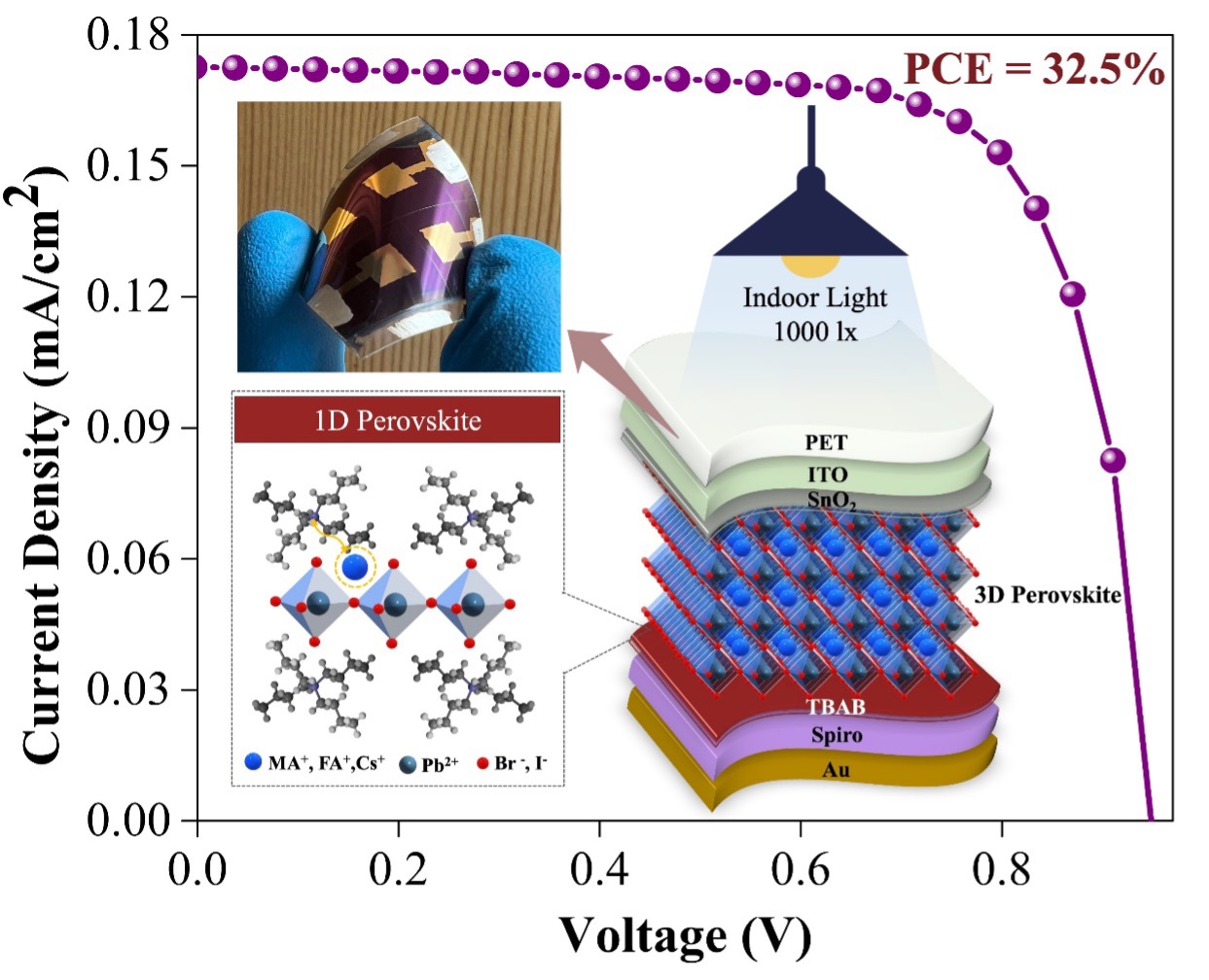| Aug 14, 2023 |
Flexible perovskite solar cells achieve record indoor efficiency on PET films
(Nanowerk News) Perovskite photovoltaic devices have garnered much attention from both the academic and industrial R&D world because they combine high power conversion efficiencies and low-cost manufacturing processes since they can be deposited in ink form or through simple evaporation. Concurrently, the rapid expansion of the Internet of Things (IoT) has given rise to a substantial demand for energy sources to power this revolution.
|
|
These sources need to convert ambient power efficiently, and need to be seamlessly integrated on surfaces or devices. Thus, a photovoltaic technology that is able to harvest light indoors, developed on thin, flexible films can be key to this aim.
|
|
A collaborative effort among researchers from various institutions, the Centre for Hybrid and Organic Solar Energy (CHOSE), Department of Electronic Engineering at Tor Vergata University of Rome, Italy, the Department of Textile Engineering at the University of Guilan, Iran, GreatCell Solar Italia, Institute of Crystallography (IC-CNR), Italy, Department of Biological and Environmental Sciences and Technologies at the University of Salento, Italy and Institute of Nanotechnology (CNR NANOTEC), Italy, has resulted in the development of flexible perovskite solar cells with remarkable power conversion efficiencies (PCE) under white LED illumination.
|
|
The team achieved a maximum PCE of 28.9% at an illuminance of 200 lx and a record of 32.5% at 1000 lx, essentially converting a third of the incoming power (note that under 1 sun this figure for perovskite technology is less, i.e. one quarter).
|
|
The results are published in the journal Solar RRL ("Highly Efficient Flexible Perovskite Solar Cells on Polyethylene Terephthalate Films via Dual Halide and Low-Dimensional Interface Engineering for Indoor Photovoltaics").
|
 |
| A graphical abstract of the work. (Image courtesz of the researchers)
|
|
The researchers believe this represents the highest reported efficiency ever achieved on polyethylene terephthalate (PET) films at illuminance levels found in environments like supermarkets where it could be used to power smart labels and sensors. The film is only about an eighth of a mm thick, not too dissimilar to the diameter of human hair. Thus these cells are flexible and can be curved easily for adaptation to many surfaces.
|
|
PET is a widely used recyclable plastic that is the same material as used in packaging water bottles, but in film form has become the transparent polymer substrate of choice for plastic electronics. In fact, compared to alternative materials like PEN it is much cheaper (even by a factor 6) as well as more stable to UV radiation.
|
|
The outstanding performance under indoor lighting was achieved through a dual low-temperature approach of compositional engineering, where some of the iodine (I) in the perovskite was replaced with bromine (Br), to increase the bandgap of the perovskite to better match the visible light spectrum of white LEDs.
|
|
Additionally, interface modification was implemented using a molecule, i.e. tetrabutylammonium bromide (TBAB), to create a low-dimensional perovskite phase at the top of the perovskite film. These strategies resulted in a 42% improvement in efficiency through perovskite composition engineering, and an additional 26% enhancement with the TBAB interlayer.
|
|
The introduction of the low-dimensional perovskite phase reduced the density of defects and minimized leakage currents, leading to improved charge carrier lifetimes, which is especially crucial under low light levels commonly encountered indoors.
|
|
The research findings are showcasing the promising potential of these flexible perovskite solar cells for indoor energy harvesting applications. All layers of the cells, except for the two electrodes, were solution processed at low temperatures (maximum 100 °C), making the technology easy to integrate with other printed electronic components on the same substrate, and compatible with low-cost manufacturing.
|
|
Ambient indoor conditions represent a milder environment compared to stringent outdoor conditions suggesting an initial commercial outlet which is much less taxing on device lifetimes for this technology. Thus, the researchers suggest that the unparalleled performance demonstrated, furnishes these devices with another new powerful competitive attribute that can pave the way for perovskite solar cells to contribute strongly to energy harvesting and the powering of the indoor electronics of the future including the fast-rising markets of autonomous indoor wireless sensor networks, smart buildings, portable, wearable, and the IoT electronics.
|

